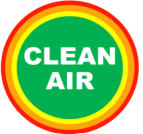THE QUESTIONS:
What is the dune dust and
what causes it?
What are the health risks
from breathing dune dust?
What level of dust emission is
considered excessive?
What can Nipomo Mesa
residents do to protect
themselves?
From where is excessive dust
being emitted?
Isn’t dune dust emission a
natural phenomenon?
How do we determine how
much of the dust emission is
caused by OHV activity versus
natural background emission?
Since the dune dust is from
sand, is there a PM10
pollution problem elsewhere
along the California coast?
Who is responsible for
mitigating the excessive
emissions?
What mitigation measures
would be most effective?
Why not plant trees to trap or
filter the dust and keep it
from getting into residential
areas?
Why has effective mitigation
not been done already?
Isn’t the dust issue just a way
for opponents of the SVRA to
shut down OHV activity on the
dunes?
How will dust mitigation
effect OHV recreation at
Oceano Dunes?

What is the dune dust and what causes it?
The dune dust plume blows up onto the Nipomo Mesa from the off-highway vehicle park on the Oceano Dunes. The dust is particulate matter (PM), also known as fine particle pollution. One misconception is that the dust is caused by vehicle tires crushing the sand grains. This makes only a small contribution to dust particle creation. Most of the dust is caused when vehicle tires break the naturally occurring crust, which allows the loosened sand grains to be blown across the surface of the dunes by the prevailing on-shore winds. In a process known as saltation, the windblown sand grains collide with each other, which breaks down the sand grains and creates fine dust particles. When the wind is high enough, the fine particles are picked up into the air and carried inland in a dust plume that blows across the Nipomo Mesa and beyond. The saltation process and resulting dust pollution is made worse by the loss of natural vegetation caused by vehicle activity. Dune vegetation slows down the surface winds and reduces saltation and dust emission.What are the health threats from breathing dune dust?
Fine particulate matter that is 10 micrometers (PM10) or less in size is classified as pollution because it is a proven health threat. When particulate matter is inhaled, it is trapped in the lungs, and some of it can become embedded in the lining of the lung, where over time it causes scar tissue that damages lung function. The effects of this are cumulative. The more PM that is inhaled the more the lungs are affected. The smallest particles can be absorbed by the lungs into the blood stream and cause heart problems. There are thousands of studies linking exposure to particulate matter with increased risk of respiratory and cardiac disease. Inhaled crystalline silica dust is known to cause lung cancer. ( learn more… ) While state and federal authorities have set maximum PM concentration exposure standards to protect public health, there is no safe level of exposure. What matters is how much PM has been inhaled over time. The health risks increase with the cumulative amount of PM inhaled in a person’s lifetime. Long-term exposures to low levels of PM10 or smaller particles and short-term exposures to higher concentrations can both have serious health effects.What level of dust emission is considered excessive?
The California Air Resources Board (CARB) has established standards for outdoor exposure to PM10 and PM2.5. These are as follows: Annual Average 24 Hour Average PM10 20 µg/m3 50 µg/m3 PM2.5 12 µg/m3 none (µg stands for micrograms) In California, emissions greater than these are by law considered excessive. However, these standards are based on a 24-hour average and thus do not truly reflect the health risks caused by dune dust from the Oceano SVRA. On the Nipomo Mesa, PM concentration peaks occur when people are most likely to be active outdoors – between the hours of 10 a.m. and about 5 p.m. During these hours, PM10 concentrations often exceed hundreds of µg/m3. A person outdoors at this time can receive in a few hours many times the exposure they would have experienced had PM10 levels been a constant 50 µg/m3 over 24 hours. Remember, there really is no completely safe level of exposure.What can Nipomo Mesa people do to protect themselves?
People who live, work or go to school on the Nipomo Mesa can protect against PM exposure by avoiding PM exposure as much as possible. T his means avoiding outdoor activity in areas affected by the dust pollution during the time of day when the PM concentrations are high. People can monitor the air quality forecasts on the Air Pollution Control District and EPA’s AirNow web sites (click here to learn more). PM concentrations are typically highest between 10 a.m. and 5 p.m. Furthermore, the pollution can often be seen. If the wind is blowing and you can actually see dust in the air, stay out of it. Very fine particulate matter can infiltrate indoors. Make sure window and door seals are in good order and windows are closed during high wind days. Consider using high-performance air purifiers for the places in your home where you spend most of your time. Running central air fans can also help reduce airborne indoor PM levels; high-efficiency return air filters work best.From where is excessive dust being emitted?
Dune dust emissions that exceed State of California PM standards primarily come from the Oceano Dunes State Vehicle Recreation (SVRA) areas where off-highway vehicle activity is allowed. Emissions often are greatest in the area known as the La Grande Tract, a 585-acre parcel within the off-highway vehicle park, in the northern part of the SVRA riding area.
Continued…

Mesa Air Facts!




